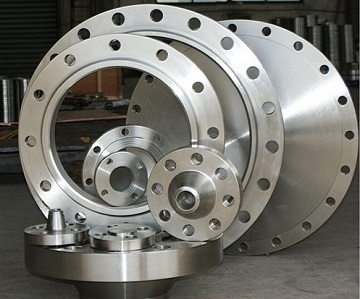Categories
- Pipe & Tube (18)
- Flange & Fitting (97)
- Fastener & Gasket (12)
- Valve & Pump (18)
- Base Material (11)
- Equipment (8)
- Application (30)
- Technical (110)
Pipe flanges manufactured in accordance with ASME B16.5 are designated to 7 pressure ratings: Class 150, Class 300, Class 400, Class 600, Class 900, Class 1500 and Class 2500. The standard specification covers flanges with pressure ratings of Class 150, 300, 400, 600, 900 and 1500 in sizes NPS 1/2 through NPS 24 and flanges with pressure rating of Class 2500 in sizes NPS 1/2 through NPS 12. The dimensions are provided in both SI metric and US Customary units with diameter of bolts and flange bolt holes expressed in inch unit. Flanges are primarily used where a connecting or dismantling joint is needed. These joints may include joining pipe to fittings, valves, equipment, other pipes, or any other integral component within the piping system. The mating pipes to be connected by ASME B16.5 flanges shall conform to ASME B36.10 or ASME B36.19 standard specifications.

ASME B16.5 flanges
The ASME B16.5 flanges may be made from cast or forged materials. Blind flanges and certain reducing flanges without hub may be made from cast, forged or plate materials. The sizes of the flanges are generally specified by NPS (nominal pipe size) or its correlated DN (nominal diameter) designations. The flange is a ring-shaped device designed to be used as an alternative to welding or threading various pipeline and piping components. The flanged joint or flanged connection is composed of flanges, gasket, and bolting. The 3 distinct elements must act together to provide a leakage-free joint/ connection.
Flanges conforming to ASME B16.5 are very prevalent in piping and pipeline engineering. They can be applied to a complete series of Codes including ASME B31.1 – power piping, ASME B31.3 – process piping, ASME B31.4 – pipeline transportation systems for liquid hydrocarbons and other liquids, ASME B31.5 – refrigeration piping, ASME B31.8 – gas transportation and distribution piping systems, ASME B31.9 – building services piping, ASME B31.11 – slurry transportation piping systems, ASME B31.12 – hydrogen piping and pipelines, as well as ASME Boiler and Pressure Vessel Codes.
Many factors and conditions shall be taken into account when determining the material grade of an ASME B16.5 flange for particular fluid service. These factors and conditions include service pressure & temperature, fluid, external & internal load and environment, stress, vibration and movement of the piping or pipeline system, corrosion and erosion requirement, etc. As stated above, flanges may be made from forgings, castings, plates or flat bars. ASME B16.5 has endorsed multiple groups of material grades covering carbon steel, alloy steel, austenitic stainless steel, duplex stainless steel, nickel and nickel alloy. ASME B16.5 has stipulated respective pressure-temperature ratings for each group of material. In particular, although some materials, such as titanium and zirconium, are not specified by the standard, flanges made from them can still be fabricated conforming to ASME B16.5 dimensions provided relative design calculation is conducted.
Flanges conforming to ASME B16.5 shall be integrally manufactured as on piece in accordance with the applicable material specification. They can be used for a myriad of applications. Depending on its own special characteristics and specific functions, these flanges are generally classified into 9 types. There are a plurality of end flange facings, among which flat face (FF), raised face (RF) and ring joint face (RTJ) are most widely used in engineering practice.
| ASME B16.5 Flange Types | ||
|---|---|---|
| Welding Neck | Slip On | Blind |
| Threaded | Socket Welding | Lapped Joint |
| LWN | Reducing | Plate |
